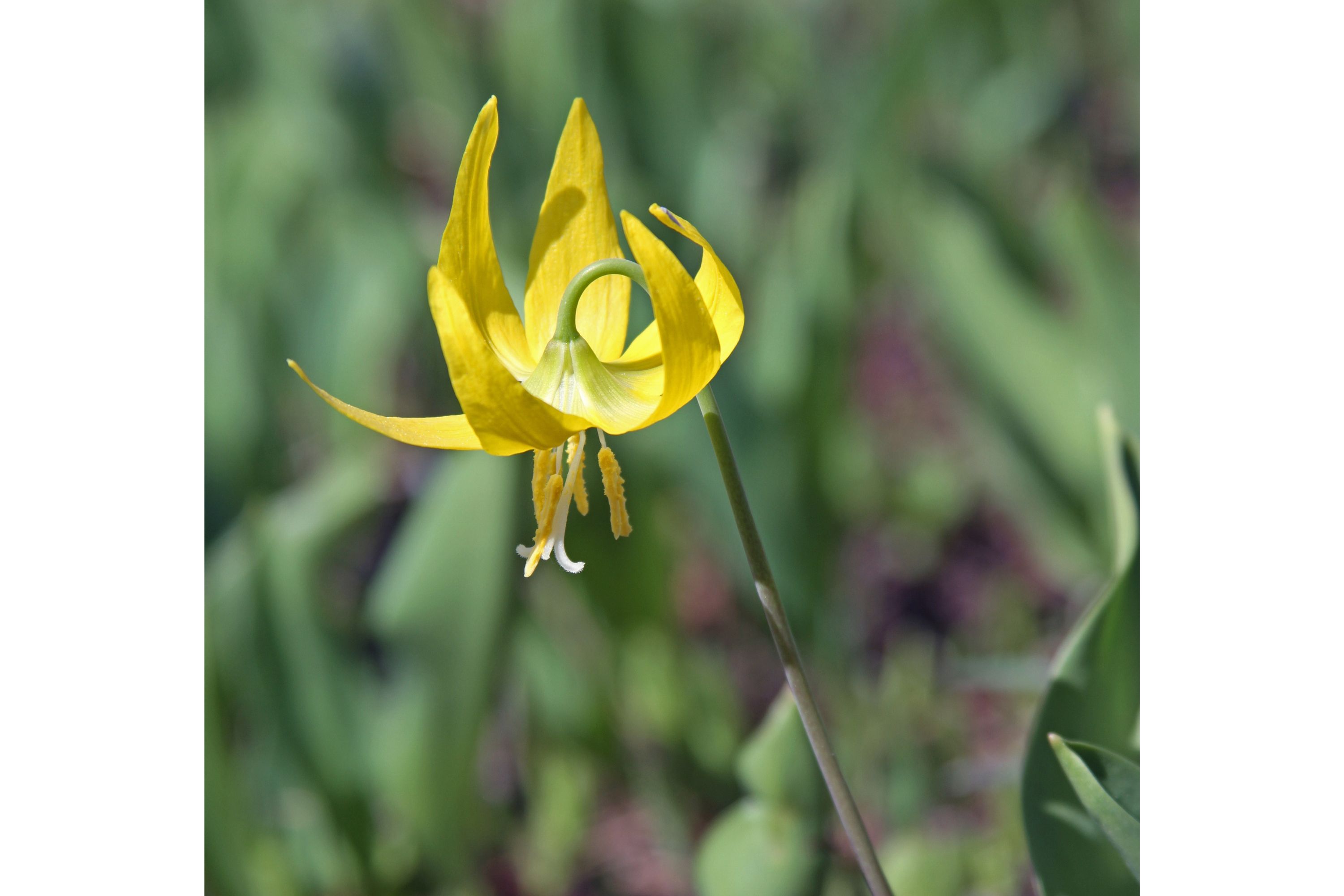Yellow avalanche lily
(Erythronium grandiflorum)

Description
Erythronium grandiflorum, commonly known as the yellow avalanche lily or glacier lily, is a species of perennial plant in the family Liliaceae. It is native to western North America, ranging from Alaska to California and eastward to Montana and Wyoming. This plant is highly sought after for its beautiful yellow flowers that bloom early in the spring, often being one of the first flowers to appear after the snow has melted. Taxonomy and Etymology Erythronium grandiflorum was first described by Thomas Nuttall, an English botanist, in 1818. The genus name Erythronium comes from the Greek word erythros, meaning red, in reference to the color of some of the species' flowers. The species epithet grandiflorum means "large-flowered," in reference to the plant's showy blooms. Physical Description Erythronium grandiflorum typically grows to be between 10 and 20 centimeters tall, with a solitary stem that emerges from a bulbous underground storage organ. The stem is leafless, and each plant typically produces only one leaf, which is basal and elongated, measuring between 10 and 25 centimeters in length. The leaf is typically mottled with purple-brown markings. The flower of Erythronium grandiflorum is large and showy, measuring between 3 and 6 centimeters in diameter. It has six bright yellow tepals (petals and sepals that are indistinguishable from each other) that are strongly reflexed, giving the flower a star-like appearance. The flower also has six stamens and a three-parted stigma. The flowers are typically produced in clusters of two to six on a single stem. Habitat and Range Erythronium grandiflorum is found primarily in subalpine and alpine meadows, as well as on rocky slopes and in open forests. It is a very hardy plant that can tolerate cold temperatures and a variety of soil conditions, including acidic and nutrient-poor soils. The plant's range extends from Alaska and the Yukon Territory in the north, down through British Columbia, Washington, Oregon, and California, and eastward to Montana and Wyoming. It is typically found at elevations ranging from 300 to 3,000 meters above sea level. Ecology and Conservation Erythronium grandiflorum is an important early-season nectar source for many pollinators, including bees, butterflies, and hummingbirds. The plant is also a favorite food of bears and other mammals, which eat the bulbs for their high carbohydrate content. While Erythronium grandiflorum is not currently listed as threatened or endangered, habitat loss due to development and climate change is a potential threat to the plant's populations. Additionally, the plant is highly sought after by collectors, and over-harvesting for the horticultural trade could pose a threat to wild populations. Cultivation Erythronium grandiflorum prefers well-drained, slightly acidic soils and partial shade, making it a good choice for planting under trees or in other shady areas. The plant is typically propagated through seed, although it can also be propagated by division of bulbs. It is important to note that the plant's bulbs are fragile and should be handled with care to avoid damage. Uses Ornamental value: Erythronium grandiflorum is a popular plant for rock gardens and other ornamental plantings due to its showy, yellow flowers that bloom early in the spring. Medicinal purposes: Some indigenous peoples in North America have used Erythronium grandiflorum for medicinal purposes. The plant contains compounds that have been shown to have anti-inflammatory properties and may be useful in the treatment of arthritis and other inflammatory conditions. Ecological importance: Erythronium grandiflorum is an important early-season nectar source for many pollinators, including bees, butterflies, and hummingbirds. The plant is also a favorite food of bears and other mammals, which eat the bulbs for their high carbohydrate content. Overall, Erythronium grandiflorum is a versatile and valuable plant that can provide both aesthetic and ecological benefits. When cultivated responsibly, it can be a valuable addition to gardens and other landscapes, while also helping to support pollinator populations and other wildlife. Conservation Status As of my knowledge cutoff date of September 2021, Erythronium grandiflorum was not listed as threatened or endangered by the International Union for Conservation of Nature (IUCN) or the United States Fish and Wildlife Service (USFWS). However, it is important to note that habitat loss due to development and climate change is a potential threat to the plant's populations. Additionally, the plant is highly sought after by collectors, and over-harvesting for the horticultural trade could pose a threat to wild populations. Therefore, continued monitoring and conservation efforts may be necessary to ensure the long-term survival of Erythronium grandiflorum.
Taxonomic tree:







